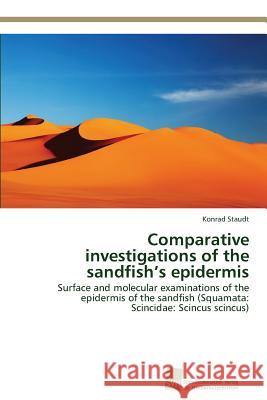Comparative investigations of the sandfish's epidermis » książka
Comparative investigations of the sandfish's epidermis
ISBN-13: 9783838132266 / Angielski / Miękka / 2012 / 108 str.
The sandfish (Scincidae: Scincus scincus) is a lizard capable of moving through desert sand in a swimming-like fashion. The epidermis of this lizard shows a low friction to sand as an adaption to a subterranean life below the desert's surface. Caused by material properties of β-keratin proteins forming the outer epidermis, this low friction reduces further adhesive wear. Both skin effects, the friction reduction and abrasion resistance outperform even steel. A possible explanation for these properties is an increased glycosylation of the β-keratins. In this study, the friction and the micro-structure of the epidermis as well as the β-keratin coding DNA and the glycosylation of the β- keratin proteins of the sandfish was investigated in comparison to other sauropsidean species. Glycan based friction reduction could be verified by force-distance measurements via atomic force microscopy: proteins were deglycosylated and the glycans covalently bound on a glass surface by silanisation. Both surfaces showed low adhesion force similar to the untreated skin of the sandfish in comparison to Eumeces schenideri and a glass control.
The sandfish (Scincidae: Scincus scincus) is a lizard capable of moving through desert sand in a swimming-like fashion. The epidermis of this lizard shows a low friction to sand as an adaption to a subterranean life below the deserts surface. Caused by material properties of β-keratin proteins forming the outer epidermis, this low friction reduces further adhesive wear. Both skin effects, the friction reduction and abrasion resistance outperform even steel. A possible explanation for these properties is an increased glycosylation of the β-keratins. In this study, the friction and the micro-structure of the epidermis as well as the β-keratin coding DNA and the glycosylation of the β- keratin proteins of the sandfish was investigated in comparison to other sauropsidean species. Glycan based friction reduction could be verified by force-distance measurements via atomic force microscopy: proteins were deglycosylated and the glycans covalently bound on a glass surface by silanisation. Both surfaces showed low adhesion force similar to the untreated skin of the sandfish in comparison to Eumeces schenideri and a glass control.











